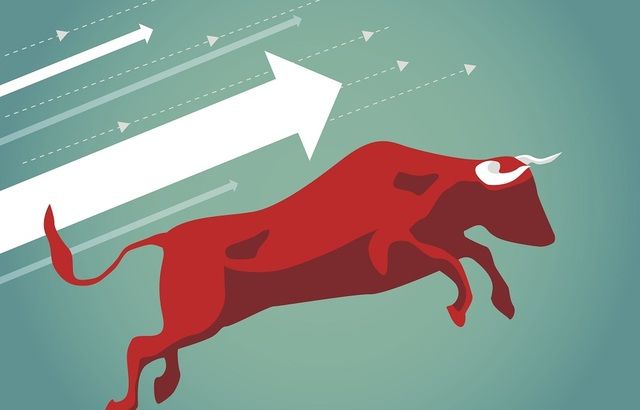The current protracted period of market calm is nothing but “extraordinary”, says Keith Wade, chief investment officer at Schroders, the asset manager. “The last time we saw anything close to this was in the 1990s, but back then GDP growth and interest rates were both a lot higher. It’s also unusual that political turmoil hasn’t had any impact,” he added.
Mostly, investors have been buying more equities on good news and have been ignoring the bad news. Though, admittedly, there hasn’t been too much of the latter of late. “This year, economic performance has been very strong, and that has increased investors’ confidence,” says Leif Hasager, chief investment officer at the Danish wealth manager Formuepleje.
Where’s the dip to buy on?
Investors’ ‘buy on dips’ mentality, which came to the fore most strongly in the aftermath of the Brexit vote and Donald Trump’s election, remains alive, although there arguably hasn’t been a real dip to buy on for a very long time now. This has already prompted some investors, such as Pictet AM’s chief strategist Luca Paolini, to make an attempt to adjust the definition of a market correction.

It’s indeed rather difficult to find bears at the moment. Those with short positions in recent years have usually found themselves at the wrong side of the trade, and most have taken their losses.
“It hasn’t been fruitful to position yourself for a correction, so there has been a certain amount of throwing in the towel,” explains Wade.
Hasager has also stopped thinking about hedging. “Hedging is costly. If you take hedges for too long, you will always lose money. We are confident enough there will be no correction for the next three months not to take any hedges.”
Equity overweight
The Dane, who has had a “maximum overweight” to equities across his portfolios since the Trump election last November, remains comfortable with equity risk despite equity markets trading at all-time highs amid ever loftier valuations. “It’s a question of relative attractiveness too,” he says, arguing bonds are closer to bubble territory than stocks. “we’ve only seen a very modest increase in bond yields so far.”
Wade agrees: “It is very much a relative story. Equity yields remain a lot higher than bond yields.”
Anders af Hällström of the Finnish multi-family office Aval, is even so unreservedly bullish that he has allocated all his money to stocks. “We have a 100% allocation to equities now. I have no put options either as we are confident about the outlook for equities and the economy, so we are overweight value stocks as well,” he says.
According to Expert Investor data, the vast majority of fund buyers and asset allocators in Europe remain overweight equities, and very few expect a market correction any time soon. At the Expert Investor Sweden forum in Stockholm this week, about 80% of delegates said they were overweight equities, while none were underweight.
But if there is such a consensus that it’s right to be bullish among investors, shouldn’t that be a warning sign?
Hasager obviously doesn’t think there is much to worry about: “Central bank liquidity is still driving markets now. There is still a lot of cash in the system. Central banks have changed their rhetoric, but haven’t yet done much. Tapering will be very slow,” he says.
Schroders’ Wade doesn’t forecast a market correction either, precisely because the main risk out there is central banks tightening too quickly. Reduced central bank liquidity is probably most likely to trigger the next downturn, as JP Morgan AM wrote in a note this week, but it’s impossible to say at this moment when this will occur and how it will manifest itself.
The Trump effect
Hasager flags a “significant pick-up in Treasury yields” as a possible near-term risk. For now, he thinks this is unlikely to happen, but Treasury yields spiked during the Trump trade late last year, while stock prices rose.
In recent weeks, we have seen a revival of the Trump trade as hopes of US tax reform increased again. Since president Trump has accomplished extremely little since moving to the White House in January, it’s of course far from certain that he will succeed this time, especially considering his extraordinary ability to alienate Republican Congress members (who he will need badly to pass any new tax laws).

If Trump’s plans fall through again, there won’t be a strong correction, believes Wade. “Some stocks will fall, but this will be [partly] compensated by bond proxies rallying.”
If Trump gets his plans for corporate tax cuts through, however, it is likely to boost stock markets, but not do very much to stimulate let alone overheat the economy, says Wade. That changes if he also gets through changes in income tax and/or a large infrastructure spending package.
“Trump’s fiscal plans were always a worry,” says Wade, as they would leave a huge hole in the government budget and would likely overheat the economy. Stocks with exposure to domestic consumption would rise even further, while the much-feared ‘pick-up in Treasury yields’ would certainly materialise in the face of rising inflationary pressures.
In other words, there is a strong risk of a boom-bust scenario if Donald Trump succeeds. Perhaps investors should take comfort in the fact that he has been doing everything possible to avoid that fate in the first nine months of his presidency.







